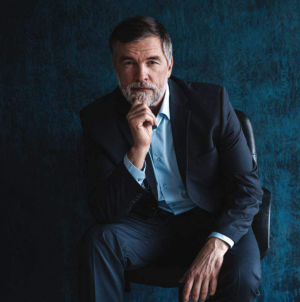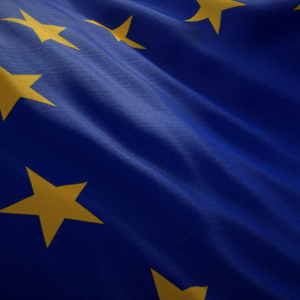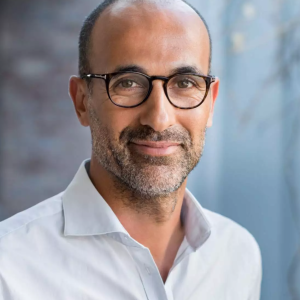
Streaming – The Barrett Group’s CEO Interviews Vice President Americas at Applicaster
The Barrett Group’s CEO Peter Irish interviews Laura Tapias, Vice President Americas at Applicaster about the challenges and opportunities within Streaming
Peter Irish: Welcome to this edition of the Hiring Line. I’m Peter Irish with The Barrett Group and it’s my great pleasure today to invite Laura Tapias, who is the Vice President Americas from Applicaster, to talk to us about streaming and how it’s evolving. Laura, please introduce yourself.
Laura Tapias: Thank you so much for having me. It’s my pleasure. I’ve been working at Applicaster for the last 10 years. I’m coming from “traditional” entertainment – selling and acquiring rights, so I’m kind of new to the streaming area. I’m in love with entertainment and the feeling of creating an impact. When I was in kids’ content, I loved to see kids loving these stories and these characters. When I focused on second screen, I loved to see people in real-time interacting with content on TV. And now, in the streaming era, it’s like having happy users engaged with the content and the way the content is presented, creating beautiful user experiences. That’s motivating me a lot.
Peter Irish: That’s a wonderful so you’re in exactly the right spot!
Laura Tapias: Looks like it.
Peter Irish: Well, there have been enormous changes. Let’s talk a little bit more about the industry. So, obviously, the pandemic had a big impact and there’s various players entering the market; impacts on advertisers; impacts on consumers; impact on operators. Tell us a little bit about how you see the industrial landscape, if you will, where we are, where we’ve been, where you think we might be going?
Laura Tapias: I don’t have a [crystal] ball. If I did, I would be richer than I am, for sure! But where we are now, I think we’re in a very beautiful lake. Two years ago, we were saying that there was an explosion, a boom, in the streaming [industry]. If we go backwards, there was a similar boom 10 years ago with the DVD. Now that boom is in streaming, and I think that after these two years everything has landed peacefully. We know exactly who the main players are, and most of them just decided to regroup their properties in the streaming properties that are very well defined.
And we users have decided what we want to pay for, what we want to consume, and when we want to consume it. Which is a human thing to do. It’s not difficult to understand that we were having crazy lives. We’ve been cooped up at home for some time. We went back to ourselves, and we decided to consume the content we want whenever we had the time. I think this is how media consumption evolved.
Of course, the SVOD [Subscription Video on Demand] is the first service that appeared.
It’s kind of substituting for traditional pay TV. What is coming next is the fast, or ad-based, television or streaming. It’s kind of taking over, substituting for commercial TV. So, in the same way that cable operators were managing the distribution of pay TV in the past, today the entities that are managing distribution are device manufacturers, like Roku, Apple, Samsung. And it depends on, you know, you have a phone that is an Android, you have a TV that has a Roku, or you have a Samsung. So, depending on what device you have, you will have access to some content or another, or you will have more easy access. Because at the end everybody’s on a platform and we are able to access the content.
Peter Irish: The distribution channels you are describing, I suppose, are Disney, Amazon, and Netflix. These are some of the major players. And then you’ve got Apple and everybody else. Are they all using a single revenue model, or do they have multiple revenue models that they’re experimenting with? How do you see that?
Laura Tapias: Experimenting is a good word. The thing is that in traditional TV, everything was averages of audience. It was an average of audience with commonly accepted measure. A date of today in the streaming, everybody measures in its own way. We have real numbers, but how we get these real numbers. They are real numbers for sure. The number of downloads that your app has. But in terms of consumption, how much time they are consuming, from where they are coming, who are these people, and so on. Everybody is just managing different ways to measure. So, that is a little bit complicated. That’s why there are companies that are mixing both models. They are having an experience for subscription and another experience for ad base.
And there are others that are dividing 100%, providing two completely different offerings. Like, it can be Pluto, or it can be Paramount Plus. In Paramount Plus you find refined productions that they also produce themselves, and you have a subscription. So, you’re happy to pay for that curated content. And then you have Pluto where you have tons of offerings of ad based live, on demand, with a lot of advertising. It’s beautifully placed, but it’s two different moments. We also, I think we have different moments of people.
Peter Irish: Hold on, a question. It’s such a great stream that you’re giving me, let me ask you a question in between. So, you know, just as when we had broadcast TV and cable came in, there were winners and losers during that evolution. We’re seeing a lot of evolution going on right now. How do you see, if you will, the winners and the losers? So, the people who own the content who generated it in the first place. The people who distributed it. People in the middle? Who’s winning out of the streaming evolution?
Laura Tapias: I’m not sure who will win, but it doesn’t change what happened before. It doesn’t change. We were selling to a broadcaster. The broadcaster today is the streamer. So, if you are a producer today, you will do a co-production, probably with Netflix and HBO Max or you know, but it will be the same as before.
Peter Irish: Structurally, it’s similar. Just different actors.
Laura Tapias: Yes, we went back to what we were. The only thing that changes is that in the past there were Windows, let’s call it Windows. So, you were saying first, it was theatrical; you were waiting six months. Then it was pay TV; you were waiting six months minimum or one year. Then you were giving it to free TV, and then you were doing the DVD. It was a long cycle of recovering the investment of the production. Now there is no long cycle anymore. You go straight to the consumer.
Peter Irish: There’s a huge demand for content, right? The content demand has never really changed. But I think something you said that was interesting is the revenue models, because they are different, because they’re experimental, this fixation on subscriber numbers is not that important actually because not everybody is on a subscription model, right?
Laura Tapias: Exactly. So that’s why here in the U.S., you see Peacock. Peacock has ad based and subscription. Same place, you decide how you want to consume. Or, for the Spanish speaking, the Vix that Univision just launched. Same, they have Vix, Vix Plus. Same entity has two business models.
Peter Irish: And what about the impact on advertisers? How has streaming affected advertisers?
Laura Tapias: Advertisers need to be ready. Advertisers in Pluto, they are ready for sure. Because Pluto has a big content offering and they have, of course, it’s the first one that went out. So, it’s the first one that is accumulating a larger base of users, but they need to be ready for this number of users. Or you go to a big number of users, like in Pluto, or you go to this specific entity or brand that goes specifically to your kind of audience. So, it’s very similar to when they were going to commercial TV. I don’t know, I’m a drink. And I want to go to all the sports, so I will go to see who has the champions, who has the NFL rights, I will go to see who has the rights and I will go to sell them, anyway.
Peter Irish: Okay, so in some ways it hasn’t fundamentally changed. Help me a little bit. How does Applicaster fit into this environment that we’ve just described?
Laura Tapias: Applicaster is providing the software for you to manage these streaming services. The importance of what I just said is the management. It’s the bills, you can build it in a lot of different ways, but the management, it’s not important to build it and then, you know, only change the content. The important thing is the management of this streaming service. This is a business unit. Today, there is no discussion. So as a business unit you will learn, and you will need to take decisions.
So, number one that we need to take decisions in terms of how you present the content, which is this user experience that you want to offer. Not only changing the content in this little square at the top. Yes, like trying to provide the different user experiences for the moment. If you’re a sports entity for sure, you have the preseason mode and the postseason mode. But if you are an entertainment, maybe you’d like to do a women’s cycle, the contents of the month of the women, whatever you can invent, whatever.
But you can just change the user experience and engage your users in a way.
The other, this happened in TV always. You remember when HBO, traditional HBO, was launching Game of Thrones? All HBO was black, and it was like “Winter is Coming.” So, it’s the same. You have to be able to do the same in the streaming services, because this is the way for you to engage with your content. But on the other side, you also have to be able to take decisions as you said. Okay, I think that I made a mistake only launching my streaming services only for subscription.
I really think that I have to open some kind of content with advertising and add some life events as transactional. For example, you have to be able to know how to evolve this business and technologically wise we are offering a platform that is allowing you this flexibility of managing your business, managing your streaming service in an operationally wise, much more effective way than having 200 engineers on top.
Peter Irish: You mentioned to me that also the video formats, the signal is very different depending on the channel, if you will. Right? So, you’re also influencing the signal?
Laura Tapias: No, we let them decide where they want to have the content life and on demand and what we do is to mirror that content in the way they want in all the platforms that they want to distribute it.
Peter Irish: Regardless of technology?
Laura Tapias: Yes.
Peter Irish: How long has Applicaster been operating approximately?
Laura Tapias: It’s been more than 10 years, but it took us a long time to arrive where we are. Like everybody, we started doing app after app after app, like tons of people. Yes. And then we said, look this industry is fast-paced, you know, it changed so fast and it’s not only changing the way the user consumes, but also the technology. ROKU is changing their protocols. Apple is changing to a new operating system. So, you have to be on top of all the changes of the industry and of the technology.
Peter Irish: So, you consolidate that, make it much easier for people.
Laura Tapias: We didn’t arrive at that without a lot of mistakes and a lot of proven tests. We’re finally here.
Peter Irish: Is there one success you might like to highlight about Applicaster in the in the last couple of years? Something exceptional?
Laura Tapias: We have beautiful names trusting our technology – that is only a technology – and the apps out there are from them, [they] are not ours. They’re only trusted as the base of the technology. And now we have beautiful customers that are happy for more than nine years. They evolved with us, and now they’re just managing themselves. Not needing to call anybody, feeling the ownership, and having all these updates by default. Like, ‘hi you have a new update whenever you want,’ which gives a lot of peace because then they can concentrate in the business.
Peter Irish: Streaming is growing radically. I’ve seen that the numbers are likely to triple over the next couple of years in terms of revenue and that sort of thing. I presume there’s a demand also for talent and of course, you know our context, there are audiences more about executives than actors. What about skills that you or other people in the streaming universe might be looking for? Are there particular pockets of skill or experience that would be particularly attractive?
Laura Tapias: Data. Everybody that knows how to read data and how to read it and explain good stories about it. That is amazing. Because it’s not only a trend, like there’s artificial intelligence, right? It’s like a trend. You have to have artificial intelligence and you’re streaming business and it needs to give you everything to it and you will have it done. And for sure the user will have a recommendation that likes it.
But as soon as you collect all this data, having the AI or not, it’s very important for several reasons. Number one, yes, you need to understand patterns of usage. We are animals [in] that we are repeating our patterns. This, you need to be detecting, if your user is following these patterns. Because you will need also to report it to the product people and how they present the content. Look, when I launched, I was a customer of Applicaster in the past.
So, I launched my own streaming service a long time ago and I’ve seen how is the people not consuming this TV series [on] TV? They have big ratings. And it was only because I discovered that when a TV series was on linear TV, I needed to place the episodes from the last one that was on air until the first one. And if it was not on air, I was needing to place it from the first to the last. Like everything that it’s archived, let’s say, the first to the last. But anything that is on air people come to see what they missed or what. So, you have to put it upside down. This, you only know it with data.
Peter Irish: But it’s also the ability to take data and turn it into information, consumer insight essentially. Right?
Laura Tapias: And how to report it internally. Because, for example, marketing will need to know that the people that don’t move from the first episode, are not continuing to see the series. But the people that move from the first to the second, they finish the series. Then marketing will have an email, a beautiful email like saying, ‘Do you know that these characters, that these are the things to the other character,’ and then the people will go back to the second, and then they will finish the series and you have better numbers in their streaming service.
Peter Irish: Are there industries that are more likely to generate the kind of people who have this data knowledge, this ability to recognize patterns, which are not already in entertainment? I mean are there theater industries?
Laura Tapias: A lot of industries that are working with that, a lot. I was teaching the other day. I remember lessons, and sometimes they invite me. There was a girl that was telling me, ‘I’m in love with data and I just decided to move to streaming because everybody’s telling me that I have to move to streaming.’ And then she was asking me, ‘but I don’t know if to move to advertising or to move to content?’ Because advertising is also looking for this feedback of how many impacts they have on the streaming services to provide the value of how much they pay and how much return they have from the campaign, for example.
Peter Irish: That’s wonderful.
Laura Tapias: There is a need to retain this user and data is key. New content is key, but the user experience is needed, and this is only the retention. It’s only coming through data.
Peter Irish: Now, you and I talked about this a little bit earlier, I saw an analysis recently that suggests Apple TV Plus is really having trouble retaining its subscribers. Exactly on the subject of retention. Do you have any theories as to why that might be, what drives that?
Laura Tapias: It’s expensive and it doesn’t have enough new content. You have other options in the market that are also generic, let’s call it generic content. They’re not extreme sports. They’re not the kids only, they are generic content entertainment.
Peter Irish: Broad populations.
Laura Tapias: Exactly. So, there are other options that have similar or better prices. They already have their planning of new content production to feed the audience with new content. Or retain these audiences and make them feel that the money they are paying for the subscription is worth it.
Peter Irish: So, are you seeing a consolidation in the content providers? I would expect that, right, as a consequence.
Laura Tapias: Yes, it’s exactly what’s happening. It’s like Discovery now just merged with Warner Media. So, HBO and Discovery, we’re having two platforms now, it will be one, and it will happen soon. Let’s see how it [will be] called. And then they will have a much more robust platform with the content of both sides because it’s one company at the end. So why do they still have two platforms?
Also, the programming. The people that were programming the traditional TV to move to streaming, to a streaming service. It has to be refreshing. Because of the retention of the user. So, to maintain your business active and positive. Now they are not only producing themselves more with co-producers, but they are also airing the new episodes once per week, like we always have been waiting for our Tuesday or Friday new episodes. So, this is happening the same. And the traditional programmers, I have a lot a lot, a lot to them.
Peter Irish: Your enthusiasm for your job and your industry and your company is self-evident, Laura. Congratulations! Do you have any thoughts about anecdotes, your own story? How did you come to be here? Is there anything you might want to share that might be encouraging for some of our audience who are still in the process of identifying that dream job the way you have?
Laura Tapias: Look, the dream job is something that makes you happy, that gives you some life. Because we spend a lot of hours working. So better you are in a place that you feel that you can provide the value for it. But in my personal story, I’ve been looking for 10 years for Windows – selling content, distributing content. I was working for the producers, distributing the content. Then I had the pleasure of stopping and having two years of launching my own TV channel. So, I was managing my own window and from there, I’m 10 years distributing the window.
When this change happened, everybody told me I was crazy. Because for a person that studied communications and had been all her life in the business of entertainment, to move to technology, and it was a startup in that moment. So, to move to technology is like, what are you doing? You are managing a regional or national TV channel. This is the dream job for everybody that studied communications and you’re living it!
And I decided that I was having something else to learn because these people were also arriving to an audience, maybe faster, and I didn’t know anything about it. Anything.
So, at that moment, I was young enough, and I was not having the kids that I have, and I said, you know what? Let’s try. And now it’s 10 years of that and I learned a lot, I have to tell you. A lot. I cannot write you a line of code, but I can really give you the full stack of the architecture of the streaming service. I can put together the two knowledges, the knowledge of how to manage the TV rights for you to be able to manage where you put that up available or not available or how you show one content in one territory in another, and so on. So, to put the two things together, it has been amazing.
But at the moment that I took the decision, I had criticism and comments to maybe go back home and hide. Maybe I’m making the biggest mistake of my life. So be brave if you feel it. I listened to my inside, my internal voice a lot and I have the feeling I was knowing that in the place, I was going to say I was going to be happy forever, but I was not going to move from there.
Peter Irish: So, if I can interpret just a little bit. What I’ve understood is you could see a bigger picture that was potentially coming, where you would be able to put these two different sets of talents together and feel more complete.
Laura Tapias: I want to learn more. Yes.
Peter Irish: And you were curious, right, and not comfortable just sitting where you were, you wanted to learn something.
Laura Tapias: That’s maybe the point, you’re right, That’s maybe the point. The moment you feel you’re sitting comfortably, stand up and go.
Peter Irish: Well, that sounds like good advice for the kinds of people were talking to. Anyway, any last words of wisdom, Laura, for our audience of executives in transition? Anything else you’d like to share?
Laura Tapias: Look, the market is crazy right now. Everybody wants to change jobs. I think that because we were in a fast-paced move, and then we were forced to stop. And when you stop, you think about yourself, and you put the value to restructure your values. Now everybody wants to be something that makes them happy. And the market also knows that. The market also knows that everybody is available suddenly.
You know everybody is happy to make a move. So, the only thing I have to tell you is to make a move that makes you happy and go to a place that values you. I think that for everybody it’s over the moment of yes, I need the salary, I will do whatever, it doesn’t matter. I think that it arrives the moment that everything is back to be alive and everybody’s looking. At the end, you have to choose to be happy and to go back home happy.
Peter Irish: Well, that’s what they say. If you’re happy, the money will follow. Thank you very much, Laura. It was a wonderful pleasure, and I appreciate very much your taking this time to join us.
Laura Tapias: Thank you, super pleasure, anytime.
Peter Irish: Thank you.
Read next: INDUSTRY UPDATE: Construction & Real Estate – April 2022












